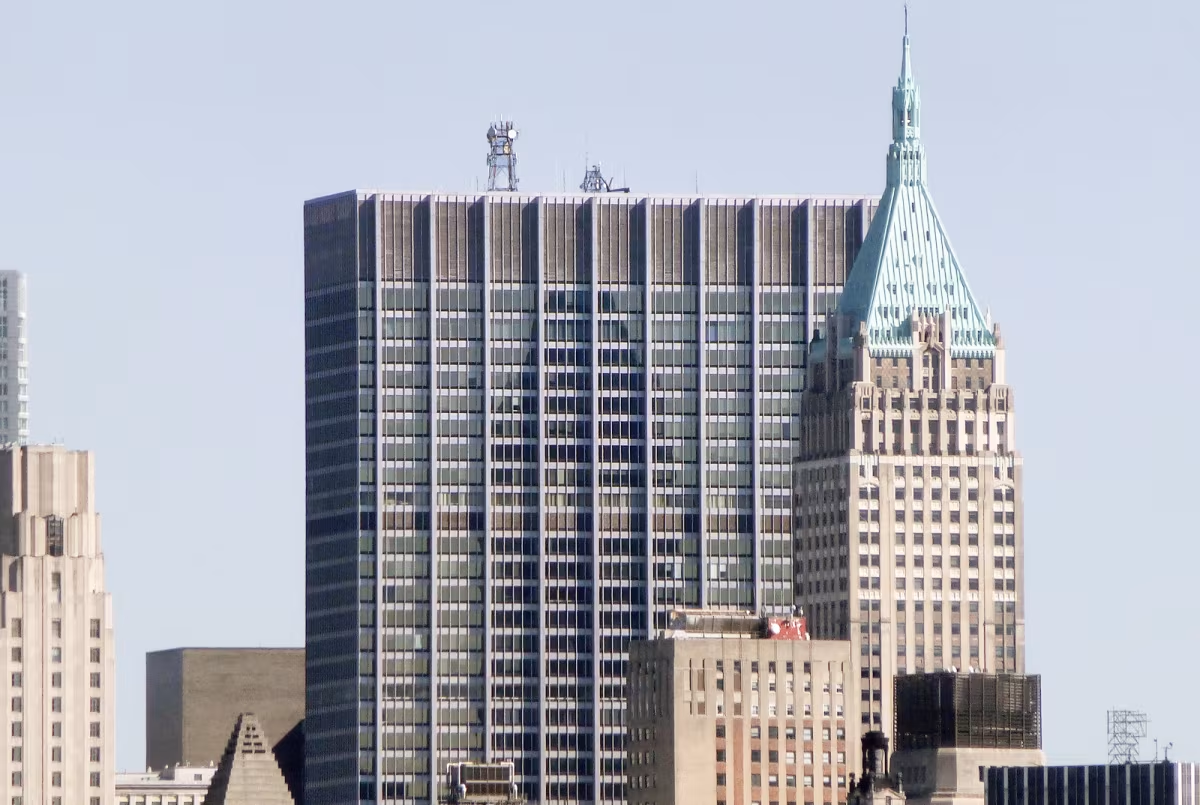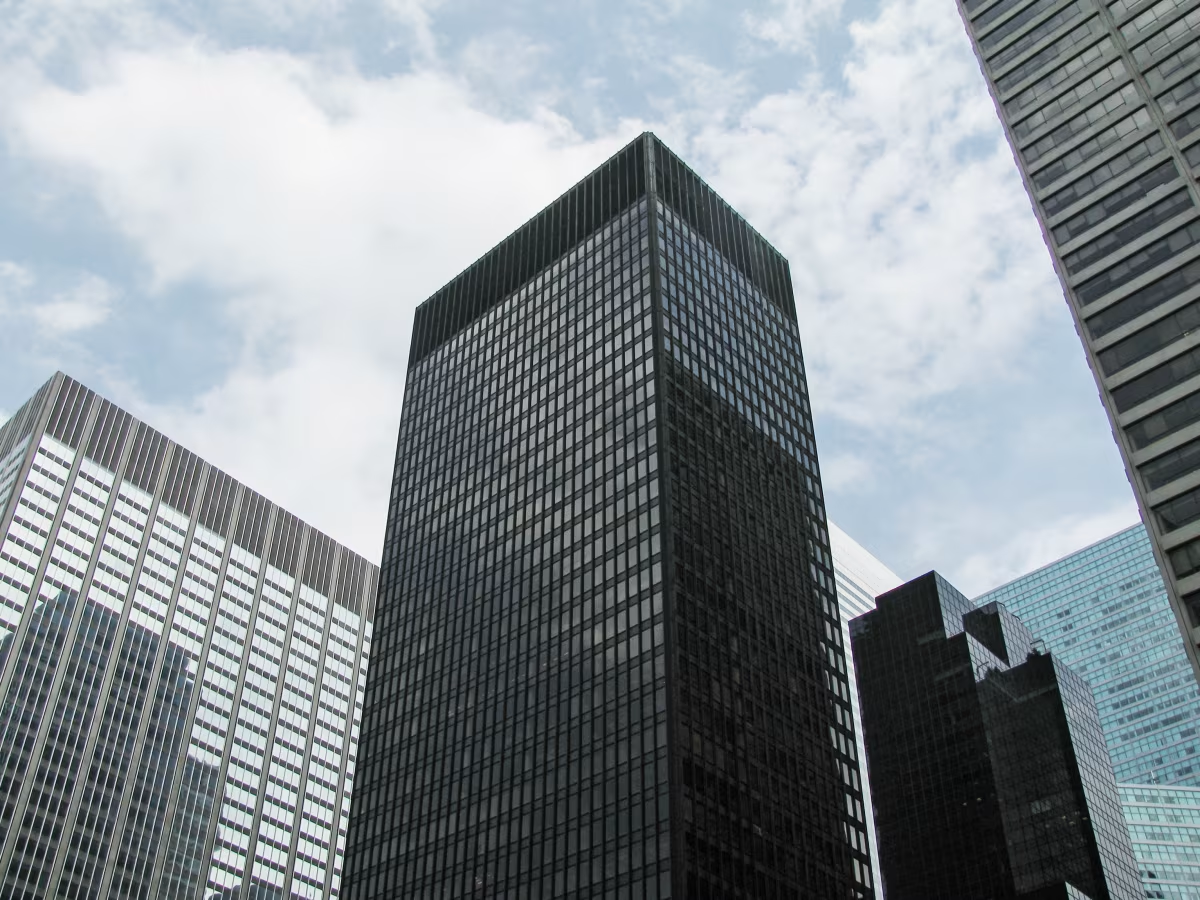28 Liberty Street Building vs Seagram Building


Comparing the 28 Liberty Street Building and the Seagram Building is interesting because they both stand in New York, NY, and were completed within 3 years of each other, but they were designed by different architects.
This offers a unique glimpse at how rival designers approached projects in the same city during the same era.
Height & Size
The 28 Liberty Street Building is clearly the larger tower of the two, both in terms of height and number of floors. It rises to 814ft (248m) with 60 floors above ground, while the Seagram Building reaches 515ft (157m) with 38 floors above ground.
Of course, each project may have faced different briefs or regulatory constraints, which we don't really know about and could also explain the outcome.
Architectural Style
Both the 28 Liberty Street Building and the Seagram Building were designed in line with the aesthetic conventions of the International Style style.
At the time, this style was at the height of its popularity. So both Skidmore, Owings & Merrill and Mies van der Rohe followed what was in many ways expected of them, producing designs that fit comfortably within contemporary architectural norms, rather than breaking with convention.
Uses
Both the 28 Liberty Street Building and the Seagram Building were designed to serve as commercial towers, and that has remained their main use since their completion, serving similar roles in the urban fabric.
Structure & Facade
Both the 28 Liberty Street Building and the Seagram Building rely on a Frame structural system.
A frame structure uses a grid of columns and beams to carry the building's loads. This frees the walls from structural duties, allowing for flexible floor plans and larger windows.
They also employ the same type of facade, a Curtain Wall facade.
A curtain wall is a non-load-bearing facade hung from the structural frame. It is anchored to floor slabs and transfers only its own weight and wind loads, allowing for sleek, glassy exteriors.
| 28 Liberty Street Building | Seagram Building | |
|---|---|---|
| Skidmore, Owings & Merrill | Architect | Mies van der Rohe |
| 1955 | Design Started | 1954 |
| 1957 | Design Ended | 1955 |
| 1957 | Construction Started | 1955 |
| 1961 | Year Completed | 1958 |
| International Style | Architectural Style | International Style |
| Commercial | Current Use | Commercial |
| 60 | Floors Above Ground | 38 |
| 5 | Floors Below Ground | 3 |
| 248 m | Height (m) | 157 m |
| 204,387 m² | Usable Area (m²) | 79,339 m² |
| 37 | Number of Elevators | 18 |
| Frame | Structure Type | Frame |
| Concrete And Steel | Vertical Structure Material | Steel |
| Concrete | Horizontal Structure Material | Reinforced Concrete |
| Yes | Facade Structural? | No |
| Aluminum, Glass | Main Facade Material | Glass, Aluminum |
| Jaros Baum & Bolles | MEP Engineer | Jaros, Baum & Bolles |
| Skidmore, Owings & Merrill, And Weiskopf & Pickworth LLP | Structural Engineer | Severud Associates Consulting Engineers |
| NY | State | NY |
| New York | City | New York |
| 28 Liberty Street | Address | 375 Park Ave |